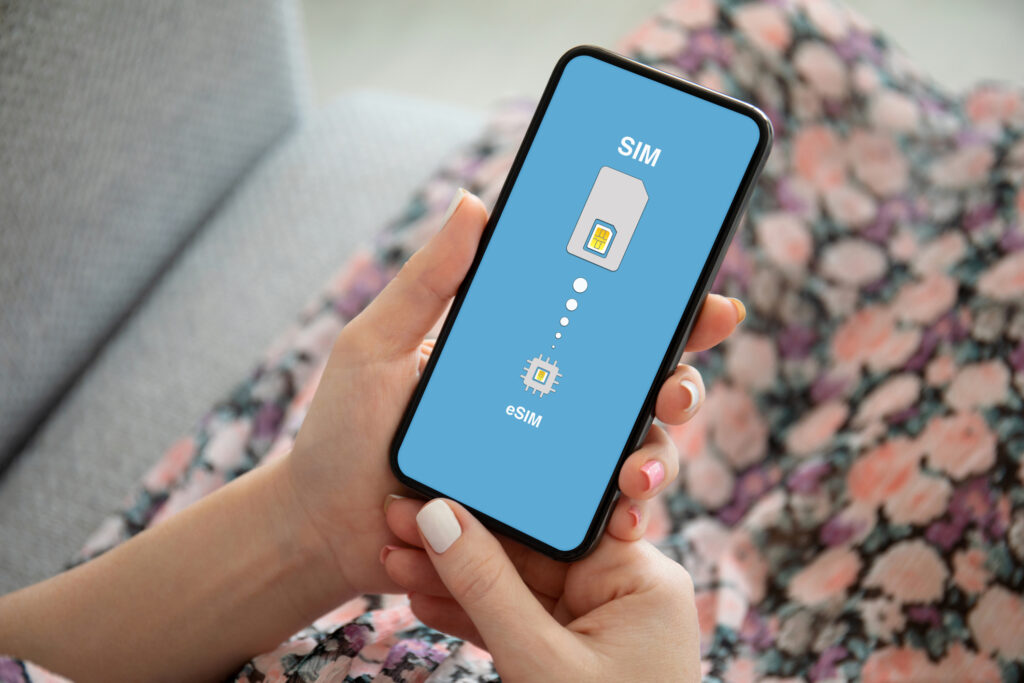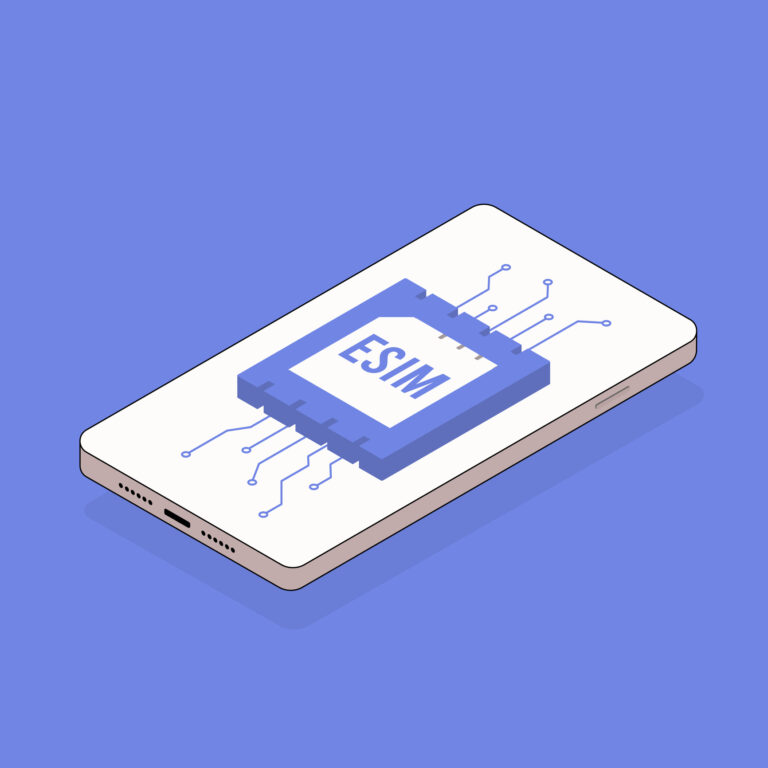Staying connected while traveling the world has long been a challenge for adventurers and globetrotters. Traditional physical SIM cards often require the hassle of swapping them out in each new destination, and international roaming charges can be exorbitant. Fortunately, a revolutionary technology has emerged to simplify global connectivity: the Global eSIM. An eSIM, or embedded SIM, is a digital SIM card built directly into your device, offering a convenient and cost-effective way to stay connected across borders.

Both “Global eSIM” and “international eSIM” essentially refer to the same technology: a digital SIM profile that allows you to connect to mobile networks in numerous countries around the world without needing a physical SIM card. This technology enables remote SIM provisioning, allowing users to switch between different mobile network operator profiles stored on their devices.
Why Choose a Global eSIM? Benefits for Travelers.
For international travelers, the advantages of using a Global eSIM compared to traditional physical SIM cards are numerous:
- Instant Connectivity: Upon arrival in a new country, you can connect to a local network within minutes. No more searching for a local SIM card vendor or waiting in long lines.
- No Roaming Fees: Global eSIM plans are typically prepaid, allowing you to pay for the data you need upfront and avoid unexpected and costly roaming charges from your home carrier.
- Local Rates: By connecting to local networks through an eSIM, you can often access local data rates, which are significantly cheaper than international roaming rates.
- Flexibility and Convenience: Managing your eSIM is easily done through an app on your phone. You can top up data or switch plans with just a few taps, especially useful when visiting multiple countries.
- Keep Your Number: Many eSIM solutions allow you to keep your primary phone number active for calls and texts while using the eSIM for data, especially on dual SIM devices.
- Enhanced Security: As an embedded chip, an eSIM cannot be physically removed if your device is lost or stolen, offering a higher level of security compared to a physical SIM card.
- Multiple Profiles: You can store multiple eSIM profiles on a single device, allowing you to easily switch between different carriers or plans as needed without physically swapping SIM cards.
- Eco-Friendly: By reducing the need for physical SIM cards, eSIMs contribute to less plastic waste, making them a more sustainable option for environmentally conscious travelers.
| Feature | Global eSIM | Traditional SIM Card |
| Connectivity | Instant, connects to local networks quickly | Requires finding and purchasing local SIM |
| Cost | Prepaid, local rates, avoids roaming fees | Potential for high roaming charges |
| Convenience | Easy online purchase and activation, digital management | Physical swapping required, risk of losing SIM |
| Security | Embedded, cannot be physically removed if lost | Can be removed and potentially misused |
| Number Management | Can keep primary number, store multiple profiles | Usually tied to one number, requires physical swapping for multiple numbers |
| Flexibility | Choose best plan for each location | Limited by home carrier’s roaming agreements |
| Environment | Reduces plastic waste | Contributes to plastic waste |
Getting Started: Purchasing and Activating.
Purchasing and activating a Global eSIM is a straightforward process that can typically be completed in a few simple steps:
- Check Device Compatibility: First, ensure that your smartphone, tablet, or laptop is compatible with eSIM technology. Most modern devices manufactured after 2018 support eSIM, but it’s always best to verify your device’s specifications. You can usually find this information on the manufacturer’s website or in your device settings.
- Choose an eSIM Provider and Plan: Research different Global eSIM providers. Consider factors such as coverage in your destination countries, data allowances, validity periods, and pricing. Several popular providers include Airalo, Holafly, Nomad, Ubigi, and Saily. Select a plan that best suits your travel needs and anticipated data usage.
- Purchase Your eSIM: Once you’ve chosen a plan, purchase it through the provider’s website or mobile app. You will typically need to provide some basic information and complete the payment process.
- Receive Activation Details: After your purchase, you will usually receive an email containing a QR code and/or manual activation details (SM-DP+ address and activation code).
- Install the eSIM:
- Using a QR Code: Open your device’s settings, navigate to the cellular or mobile data section, and look for an option to add a new cellular plan or eSIM. Select the option to use a QR code and scan the code you received via email. Follow the on-screen prompts to complete the installation. Ensure you have a stable Wi-Fi connection during this process.
- Using Manual Details: If you cannot scan the QR code, you can usually enter the SM-DP+ address and activation code manually in the same section of your device settings.
- Activate the eSIM: Once the eSIM is installed, you may need to activate it in your device settings. Depending on the provider’s activation policy, the eSIM might activate immediately upon installation or only when you arrive in a supported country and connect to a local network.
- Configure Your Settings: In your phone’s cellular settings, ensure that the eSIM is selected for mobile data. If you want to keep your primary SIM active for calls and texts, configure your device accordingly in the dual SIM settings. Also, make sure data roaming is enabled for the eSIM if required by your provider.

Choosing Your Perfect Plan: Types of Global eSIM Plans.
When it comes to selecting the best Global eSIM plan for your travels, understanding the different types available is key to making an informed decision. These plans vary based on several factors, allowing you to choose one that precisely aligns with your specific needs and travel style.
Global eSIM plans differ primarily in their data allowance, offering options ranging from smaller data packages like 1GB or 3GB, which are suitable for light usage such as checking emails, using navigation apps, and occasional social media browsing, to larger allowances of 10GB, 20GB, or even unlimited data for those who anticipate heavier usage like streaming videos, attending video calls, or working extensively online. The amount of data you need will depend on your typical online activities and the availability of Wi-Fi during your travels.
Another crucial factor is the coverage area of the eSIM plan. You’ll find local eSIMs designed for use in a single country, regional eSIMs that provide connectivity across a specific geographical area like Europe, Asia, or North America, and truly global eSIMs that offer coverage in a vast number of countries spanning multiple continents. If your trip involves visiting multiple countries, a regional or global plan can be more convenient and cost-effective than purchasing separate local eSIMs for each destination. Always carefully check the specific list of supported countries for any global or regional plan to ensure it includes all the places you intend to visit.
The validity period of a Global eSIM plan is another important consideration. These plans are typically offered with a specific duration, ranging from short-term options like 7 or 15 days, which are ideal for shorter trips, to longer-term plans valid for 30, 90, or even 365 days, catering to extended stays or frequent travelers. Some providers also offer the possibility to top up your data if you run out before the validity period ends.
In terms of service, Global eSIM plans generally fall into two main categories:
- Data-Only Plans: These are the most common for international eSIMs and provide internet access for various online activities, including browsing, using apps, and communicating through messaging platforms like WhatsApp or Telegram.
- Plans with Voice and SMS: While less common for travel-focused eSIMs, some providers offer plans that include a local phone number, enabling you to make and receive calls and send text messages in addition to using data. This can be beneficial for local interactions or when a phone number is required for certain services.
Travel Smart: Tips for Using Your Global eSIM.
To make the most of your Global eSIM and ensure a smooth and cost-effective connectivity experience while traveling internationally, consider these practical tips and best practices:
- Managing Data Usage: To avoid running out of data prematurely and incurring unexpected costs, it’s wise to manage your data usage effectively. Whenever possible, connect to Wi-Fi networks available in hotels, cafes, airports, and other public places. This will help conserve your mobile data for times when Wi-Fi is not accessible. Additionally, disable automatic app updates in your device settings and restrict background data usage for apps that don’t require constant connectivity. Before your trip, take the time to download offline maps using apps like Google Maps, as well as any other essential travel resources such as language packs or offline translators. This will allow you to access crucial information without consuming your precious mobile data. Regularly monitor your data usage through your phone’s settings or the dedicated app provided by your eSIM provider. Many providers also send notifications when your data usage reaches a certain threshold, helping you stay informed.
- Troubleshooting Common Issues: Even with careful planning, you might occasionally encounter connectivity issues. One of the first things to check is whether data roaming is enabled for your eSIM in your phone’s cellular settings. This setting is often necessary for international connectivity with eSIMs. If you experience any problems, a simple restart of your device can often resolve minor technical glitches and re-establish a connection. Remember to also verify that you are within the coverage area of your chosen eSIM plan, as network availability can vary depending on your location. If you have multiple SIMs or eSIMs active on your device, ensure that the correct eSIM profile is selected as the default for cellular data in your phone’s settings. For those using data-only plans who need to make voice calls, utilize VoIP (Voice over Internet Protocol) applications like WhatsApp, Skype, FaceTime, or Telegram. These apps use internet data for calls and messages, allowing you to stay in touch without incurring traditional cellular charges. If you encounter issues during the activation process, double-check the QR code or manually entered activation details provided by your eSIM provider and ensure you have a stable internet connection. If problems persist, don’t hesitate to contact the eSIM provider’s customer support for assistance.
READY TO START PROVIDING GLOBAL CONNECTIVITY?
Partner with us to sell eSIMs with ease and insight.
Conclusion: Embrace the Future of Travel Connectivity with Global eSIM.
Global eSIM technology represents a significant leap forward in how we stay connected while exploring the world. By offering seamless connectivity, substantial cost savings compared to traditional roaming, unparalleled convenience, and enhanced security, Global eSIMs are transforming the travel experience for millions. The ease of purchasing and activating a digital SIM profile before or upon arrival, the flexibility to switch between different plans and providers without the hassle of physical SIM cards, and the ability to keep your primary number accessible while using local data make Global eSIMs an indispensable tool for modern travelers. As more devices incorporate eSIM capabilities and more providers enter the market with competitive plans, the adoption of this technology is only set to grow. For your next international adventure, consider making the switch to a Global eSIM and unlock a world of seamless connectivity at your fingertips.


